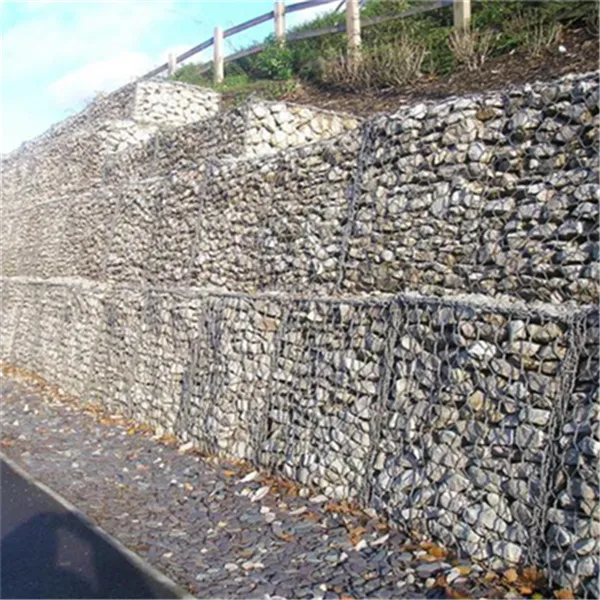velj . 06, 2025 04:43 Back to list
gabion retaining wall drainage
Installing a gabion retaining wall provides a robust solution for soil erosion control, landscaping, or creating aesthetic architectural designs. However, ensuring adequate drainage is critical to its longevity and functionality. Poor drainage can lead to waterlogging, increased weight on the structure, and potential failure, so it is imperative to understand the nuances involved in gabion retaining wall drainage.
An often-overlooked but significant aspect of drainage is considering the local water table and seasonal weather patterns. If the construction area has a high water table or experiences heavy rainfall, increasing the capacity and frequency of weep holes along the wall's length becomes essential. In some cases, a more substantial French drainage system might be needed to intercept and divert groundwater before it reaches the wall. Another critical element is considering surface water management. Design the surrounding landscape to channel surface runoff away from the wall. Incorporate gentle slopes or swales; these can divert water efficiently. Drainage channels or catch basins might be required to manage and redirect water flow towards a safe discharge point. Regular maintenance checks can avert long-term issues. Periodically inspect the gabion wall to ensure that drainage pipes remain unblocked, check for any signs of erosion or settling within the wall or the surrounding landscape. Early intervention can prevent minor issues from escalating into major structural problems. In summary, while gabion walls inherently possess excellent drainage attributes thanks to their permeable nature, additional drainage measures tailor-made to the specific site conditions can enhance their effectiveness. Careful consideration of foundation, backfilling, local hydrology, and weather patterns should determine the drainage strategy. Through attentive planning and regular maintenance, gabion retaining walls can provide long-term stability, environmental fit, and visual appeal in a diverse range of settings.


An often-overlooked but significant aspect of drainage is considering the local water table and seasonal weather patterns. If the construction area has a high water table or experiences heavy rainfall, increasing the capacity and frequency of weep holes along the wall's length becomes essential. In some cases, a more substantial French drainage system might be needed to intercept and divert groundwater before it reaches the wall. Another critical element is considering surface water management. Design the surrounding landscape to channel surface runoff away from the wall. Incorporate gentle slopes or swales; these can divert water efficiently. Drainage channels or catch basins might be required to manage and redirect water flow towards a safe discharge point. Regular maintenance checks can avert long-term issues. Periodically inspect the gabion wall to ensure that drainage pipes remain unblocked, check for any signs of erosion or settling within the wall or the surrounding landscape. Early intervention can prevent minor issues from escalating into major structural problems. In summary, while gabion walls inherently possess excellent drainage attributes thanks to their permeable nature, additional drainage measures tailor-made to the specific site conditions can enhance their effectiveness. Careful consideration of foundation, backfilling, local hydrology, and weather patterns should determine the drainage strategy. Through attentive planning and regular maintenance, gabion retaining walls can provide long-term stability, environmental fit, and visual appeal in a diverse range of settings.
Latest news
-
Wire Mesh Thickness Impact on Gabion Wall Load Bearing
NewsAug.12,2025
-
Ultimate Guide to Hexagonal Gabion Box
NewsAug.12,2025
-
Types of Rocks for Gabion Baskets Durability and Aesthetics
NewsAug.12,2025
-
Standard Gabion Box Sizes and Their Industrial Applications
NewsAug.12,2025
-
Easy Guide to Building Garden Gabion Cages at Home
NewsAug.12,2025
-
Drainage Solutions for Gabion Mesh Structures
NewsAug.12,2025
-
Visualizing Gabion 3D Integration in Urban Landscapes with Rendering
NewsJul.23,2025
Manufacturer of Silk Screen Products
QuanhuaProvide high-quality products and services to global customers.






